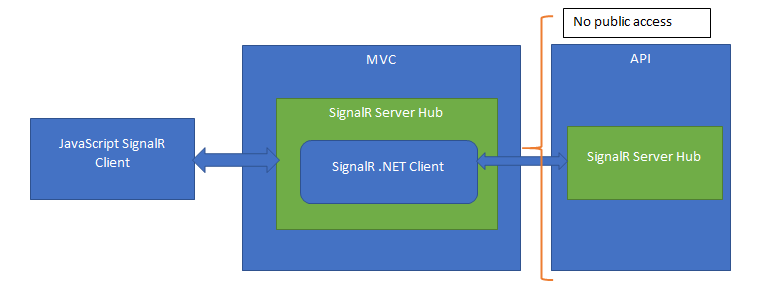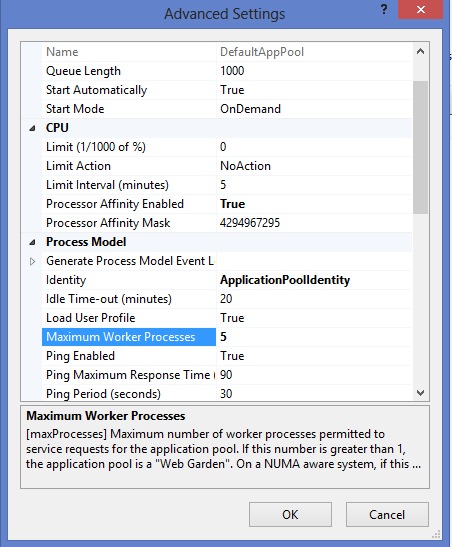I have an MVC web application that communicate to a back-end web API. The API is not exposed directly to public and resides inside a virtual network.
But I want to implement a SignalR connection between my front-end MVC and back end web api.
In this setup I have two SignalR clients and two SignalR servers.
The first SignalR client is a JavaScript client that communicate to the SignalR server in the MVC application.
The second SignalR client is a .NET SignalR client inside the MVC app that can connect to SignalR server in the API.
The setup works this way.
1.JavaScript client establish a connection with MVC SignalR server hub.
2.The MVC SiganlR server hub establish a connection with API server hub through the SignalR .NET client inside the MVC app.
This is my JavaScript Client.
"use strict";
var connection = new signalR.HubConnectionBuilder().withUrl("/mvcHub").build();
connection.on("ReceiveMessage", function (user, message) {
var msg = message.replace(/&/g, "&").replace(/</g, "<").replace(/>/g, ">");
var encodedMsg = user + " says " + msg;
var li = document.createElement("li");
li.textContent = encodedMsg;
document.getElementById("messagesList").appendChild(li);
});
connection.start().catch(function (err) {
return console.error(err.toString());
});
document.getElementById("sendButton").addEventListener("click", function (event) {
var user = document.getElementById("userInput").value;
var message = document.getElementById("messageInput").value;
connection.invoke("SendMessage", user, message).catch(function (err) {
return console.error(err.toString());
});
event.preventDefault();
});
This is my MVC Server hub
using System.Threading.Tasks;
using Microsoft.AspNetCore.SignalR;
using Microsoft.AspNetCore.SignalR.Client;
namespace WebApplication2
{
public class MvcHub:Hub
{
private readonly IHubContext<MvcHub> _hubContext;
public MvcHub(IHubContext<MvcHub> hubContext)
{
_hubContext = hubContext;
}
public async Task SendMessage(string user, string message)
{
var connection = new HubConnectionBuilder()
.WithUrl("http://localhost:50735/apiHub")
.Build();
connection.StartAsync().Wait();
await connection.InvokeAsync("SendMessage",
"sadsd", "sdf");
connection.On<string, string>("ReceiveMessage", (user1, message1) =>
{
_hubContext.Clients.All.SendAsync("ReceiveMessage", user1, message1);
});
}
}
}
This is my API Server hub
using System.Threading.Tasks;
using Microsoft.AspNetCore.SignalR;
namespace WebApplication1
{ public class ApiHub : Hub
{
public async Task SendMessage(string user, string message)
{
await Clients.Caller.SendAsync("ReceiveMessage", user, message);
}
}
}
From inside your API controller you can route message to MVC UI via this code.
public class ValuesController : ControllerBase
{
private readonly IHubContext<ApiHub> _hubContext;
public ValuesController(IHubContext<ApiHub> hubContext)
{
_hubContext = hubContext;
}
// GET api/values/5
[HttpGet("{id}")]
public ActionResult<string> Get(int id)
{
_hubContext.Clients.All.SendAsync("ReceiveMessage", "vivek", "asdad");
return "value";
}
}















You must be logged in to post a comment.